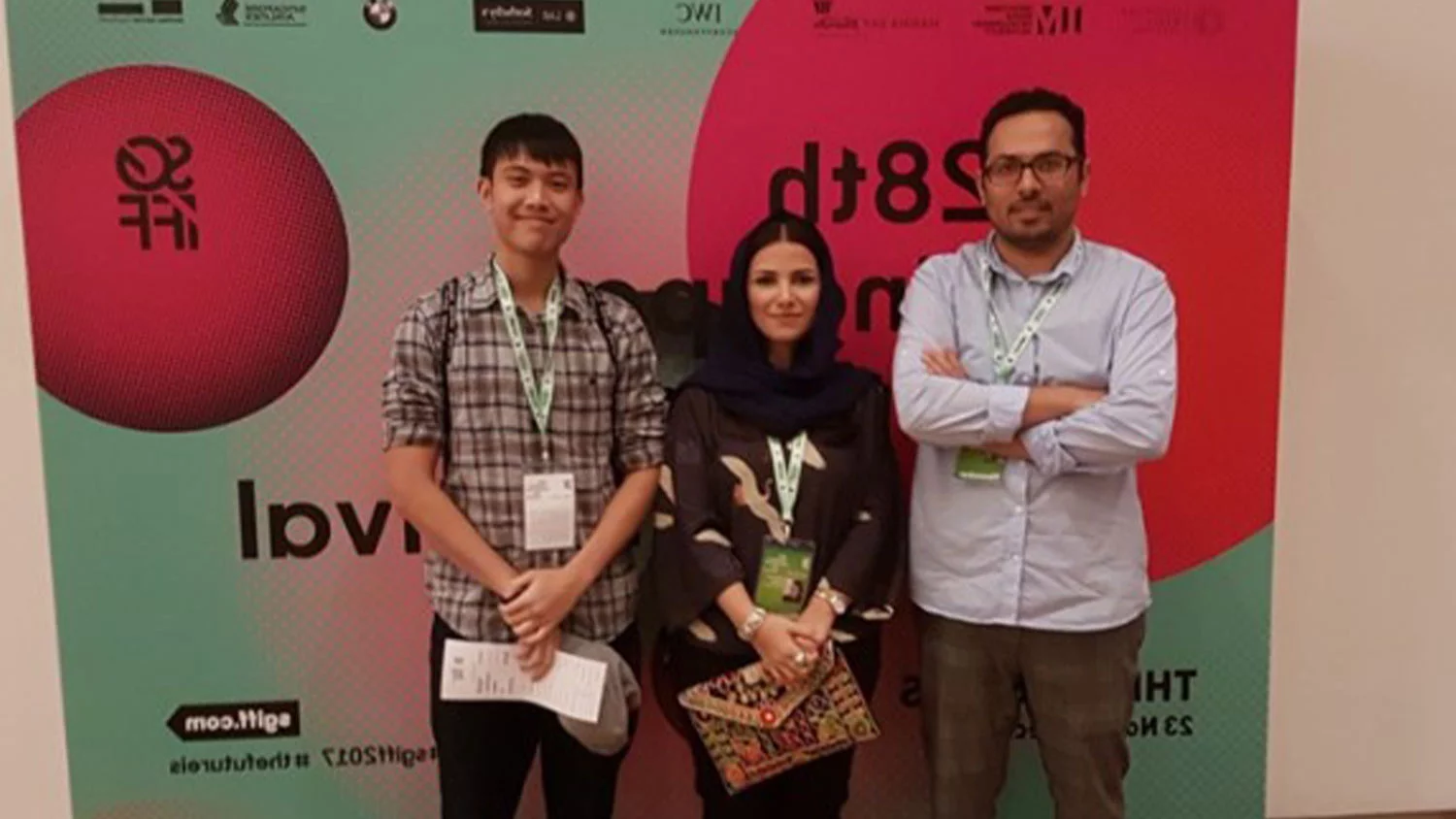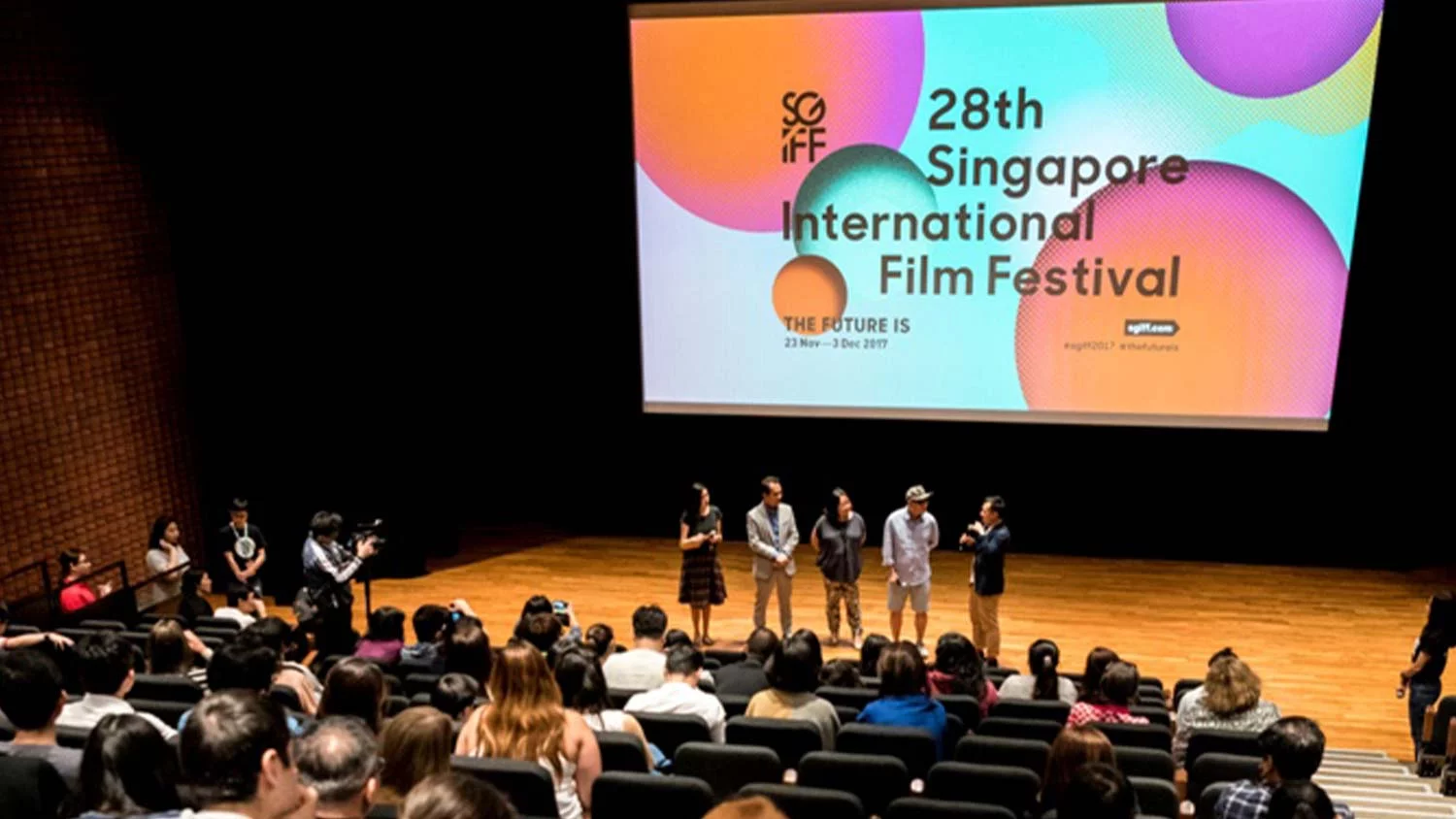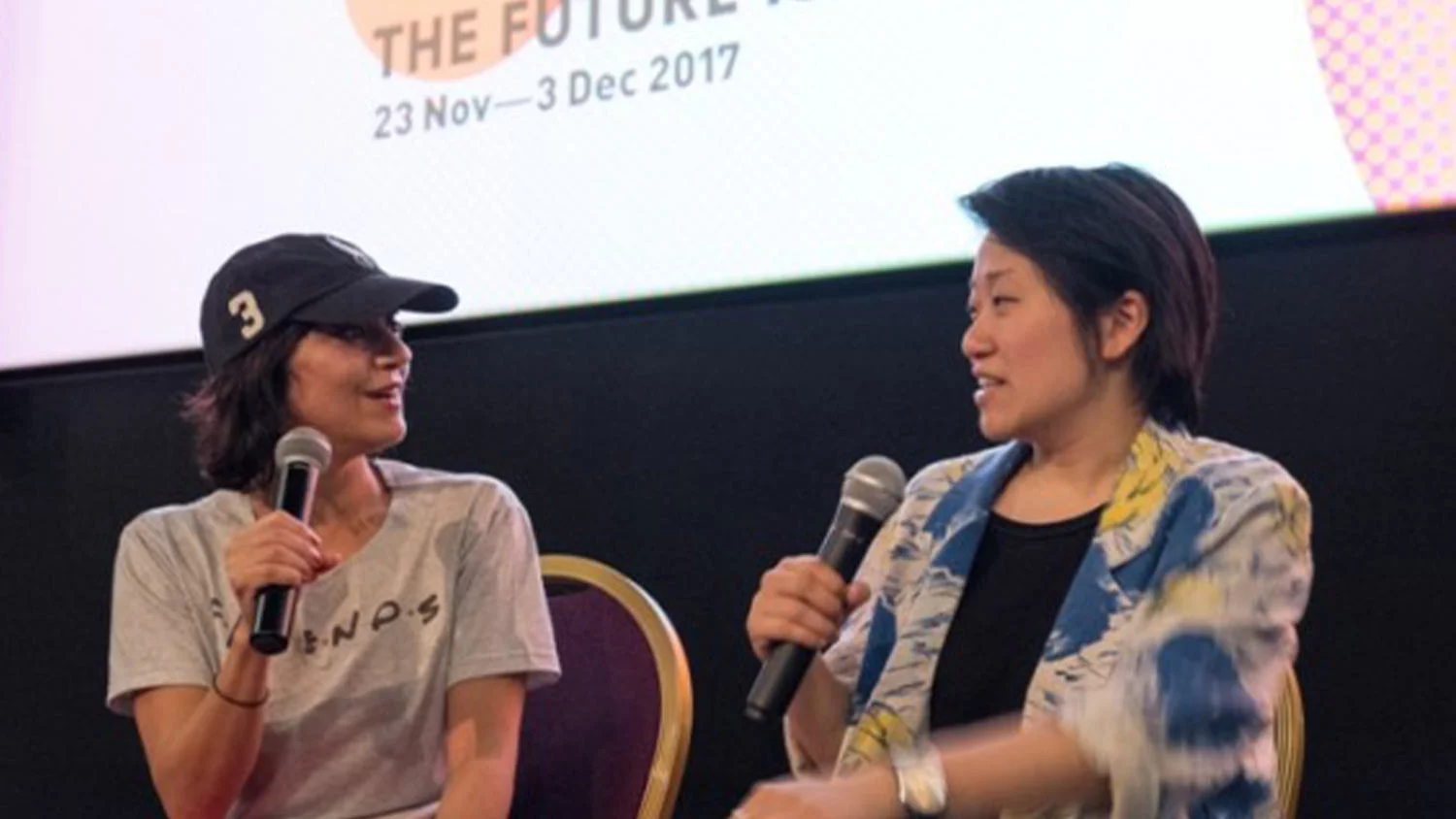SGIFF 2017 On the Ground • Days 5 to 8 (November 27-30)
By SGIFF Writers

The cold-sweat anxiety of being in the midst of a maths exam when suddenly the numbers before you turn into hieroglyphs. This feeling was resurrected from the depths of my childhood during SGIFF’s 15 sup th sup anniversary screening of Jack Neo’s I Not Stupid at the National Museum, as part of the Singapore Panorama section. Nostalgia hung in the air like a cloud on the verge of bursting, and about halfway through the film, I realised I was surrounded by a chorus of tear-choked sniffles. Whether the audience was crying for a childhood they missed or a childhood they resented, it was certain that this film still strikes a chord with its audience. It left me wondering: If there is no perfect way to quantifiably measure intelligence, then why do we attempt to do so in the first place? Perhaps it’s a question Neo intended to raise 15 years ago. He even admitted, during the post-screening QA, to having opened up a dialogue that didn’t exist back in 2002. However, we stillface the brunt of having our worth labelled by arbitrary measures. If a social satire remains relevant, then so does the problem it satirizes. Although Neo seemed to suggest that parents and children’s attitudes have changed in the last 15 years, making the possibility of a sequel close to none, perhaps in reality we have just given different names to the same problem. This screening was a timely reminder to take a step back and ask ourselves what more we can do to create a society where the label ‘stupid’ ceases to exist. – Tanvi Rajvanshi Disappearance Monday, November 27, 7:00 p.m., National Gallery Singapore

(L-R) SGIFF writer Hansel Arief with Disappearance creators Farnoosh Samadi and Ali Asgari. Courtesy of Hansel Arief
Disappearance received an ovation from the National Gallery Singapore crowd as soon as the credits rolled. The Iranian movie follows a young couple desperately seeking urgent medical attention in Tehran without their parents’ knowing, for fear of reproach. As much as the story is about a couple, the intention behind it goes beyond that. Ali Asgari (director and co-writer) and Farnoosh Samadi (co-writer) talked after the screening about Iranian conflicts between traditional, theocratic values and modern-day mindsets. Samadi began by explaining that Disappearance had been based on the experiences of her real-life friend, which at the time Samadi had trouble understanding: “I have a really, really open-minded family. So [I] was really surprised. Why couldn’t this girl talk with her mother? If I were in that situation, of course I could call my mother and my father to talk with them.” On the other hand, Asgari talked about his own upbringing. “I myself lived in a very traditional and religious family and I have seen this kind of conflict between the parents and my sisters and myself.” He highlighted the contradictions of Iran’s younger generation and their Islamic beliefs. “Drinking is illegal in Iran but everybody’s drinking… living with your boyfriend is, by law, illegal but everybody’s doing that.” Playfully, he added, “Making films is illegal but now it’s not illegal.” But this joke had some basis in truth. He recalled the difficulty the pair had in getting permission to shoot Disappearance in the first place. “It’s very controversial for them. Usually the process is two weeks… but we received nothing for two months and we already rented the crew, the camera and everything.” So far, he said, “we [have not been able to] get the permission to show the film [commercially in Iran].” Indeed, making a film in Iran comes with all kinds of challenges other filmmakers don’t face. “It’s not possible to show the relationship between the woman and the man inside the house; it’s illegal,” Asgari said. “It’s not even possible to show a father and daughter touch each other because in real life they’re not [father and daughter].” As a result, Iranian filmmakers prefer to shoot outside instead. Cars make the perfect alternative to indoor settings. Samadi added, “We live in the car, we smoke in the car, we drink in the car, we have something really intimate in the car because this is a safe place for us.” Algari shook his head and sighed at that, as the crowd responded with incredulous, sympathetic laughter. – Hansel Arief hUSh Monday, November 27, 9:30 p.m., National Museum of Singapore

Djenar Maesa Ayu and Kan Lumé, directors of hUSh. Photograph by Ho Choon Hiong
Kan Lumé and Djenar Maesa Ayu’s hUSh premiered at the National Museum as part of the Singapore Panorama, a section of the festival focusing exclusively on developments in Singapore film. Lumé and Ayu’s film is an example of how local cinema is beginning to broaden its reach, airing out views on pressing issues faced by the region. Presented as a documentary, hUSh follows Indonesian pop star Cinta Ramlan on a journey from Jakarta to Gili Islands, where her ‘work hard, party harder’ lifestyle slowly reveals a deeply troubled past. The catch is… it’s all made up. During the post-screening Q\u0026amp;A, Ayu clarified: Ramlan is definitely an Indonesian singer, but everything else in the story was scripted. This included emotionally intense scenes where Ramlan goes into detail about issues such as being molested as a child, having abortions, and going to jail for drugs. This clarification was necessary, because to the uninformed viewer, everything about the way the film is made points to it being non-fiction. That stylistic choice did leave me questioning if there is an ethical line to be drawn in a case where fictionalised stories of abuse appear as non-fiction. When I interviewed Lumé prior to the festival, he told me he hoped that after watching hUSh, “people realise we need to look beneath a person’s behaviour to fully understand them.” Listening to the probing questions by the audience following the screening, it definitely seemed like the film had had its intended effect. With every response, the filmmakers peeled back layers of their film to discuss everything from what it means to be a woman in Indonesia, to what it’s like telling intimate stories about other people. – T.R. The White Girl: In Conversation + Screening Tuesday, November 28, 3 p.m., ArtScience Museum (conversation); 8 p.m., Capitol Theatre (screening)

(L-R) Actor Jeff Yiu, co-director Christopher Doyle and actress Angela Yuen of The White Girl, in conversation. Photograph by Bonnie Yap
A fast-changing place is hard to hold on to. This is the sentiment behind The White Girl, co-directed by Hong Kong filmmaker Jenny Suen and iconic Aussie cinematographer-director Christopher Doyle—who (along with cast members Angela Yuen, Joe Odagiri, Jeff Yiu and Tony Wu) took to the ArtScience Museum for a conversation before the film’s screening later that night.Suen shared that the story was inspired by her own real-life experience: returning to Hong Kong after eight years of living abroad, she found out that the fishing village outside her bedroom window was no longer inhabited—the fishermen had moved out while she was gone. Suen sees the fishing village as a metaphor for Hong Kong, whose recent socio-political changes mean the city she once knew has disappeared. Because Singapore’s own history is not dissimilar, Suen and Doyle suggested that local audiences might find resonance in the film’s themes as well.The conversation expanded into a discussion on working on set. One question raised was language barriers between Japanese actor Odagiri and the rest of the cast and crew. Doyle used the chance to make a bigger point about filmmaking. Directing young actor Jeff Yiu (who acts as Ho Zai in the film) and Odagiri (who plays a wandering Japanese artist) to re-enact a scene from the film about how different cultures express numbers differently, Doyle explained the universality of film as a language. The White Girl, he posited, explores how people move around spaces and react to each other; spoken language is but a secondary concern.Overall, Suen reflected, “I’m so proud of everyone that we worked with. It’s my first film, and I feel like I grew up through it. Angela grew so much in the film as well. And when we first started shooting the film, Ho Zai was this tall…” Doyle made Yiu stand up. “…Now, he’s this tall!”– Kathy Poh“The White Girl is not a film, it is a homecoming.”When Jenny Suen’s words echoed through Capitol Theatre, for the first time in the night, the crowd was silent, attentive and curious. In that moment, the red carpet entrances and the flashing lights from before were distant. All that mattered in the theatre was what Suen had to say, both in her speech and in her film. Just before the lights dimmed, co-director Christopher Doyle remained on stage, holding onto the mic, declaring the film a “love story to our city.” Both directors’ words were a glimpse into their emotions behind their work. The White Girl is about Hong Kong, made by Hong Kong, for Hong Kong.In a tangent from the usual pulsating color of his past works, the paleness and stillness of Doyle’s cinematography conceals a sleepy, forgotten fishing village in neglect. Much like holding up a rusty, broken mirror, the film’s fragmented moments reflect the eventual loss of Pearl Village to men with money who want more money. Through this broken mirror, the audience can only watch from a distance as its residents attempt to resist the overtaking of their home. At the same time, because the film is presented in disrupted shards of sequences that do not exactly fit together, the narrative does feel as if parts have been broken off, leaving us to guess at the whole picture.– Priscilla Alexandrea Short Films By Ana Lily Amirpour Wednesday, November 29, 7 p.m., Filmgarde Bugis+

Filmmaker Ana Lily Amirpour with moderator Kirsten Tan. Photograph by Brendan Poh
Human beings are at their best when they’re listening, but the internet makes it so that everybody talks over each other. Nobody listens,” mused Ana Lily Amirpour when asked her thoughts on social media following the screening of her short films. This question, of what gives us our humanity and if we’re even any good at being humans, loomed over all the shorts by the American director (who is an SGIFF ’17 juror, and made a name for herself with features A Girl Walks Home Alone at Night and The Bad Batch). In 2009 short “Six and a Half”, a little girl gets hurt while going into a pond to catch a frog. She later takes her revenge by crushing the frog under a rock to its death. Even though Amirpour focuses on a child’s perspective, there is something very adult about assigning blame for a bad experience to the most convenient option. Amirpour juxtaposes profound existential reflections with an innocent and playful visual language to express beautifully humane qualities such as empathy and understanding. But when you least expect it, she twists the knife to reinforce how the same qualities make us unpredictable and volatile. The most representative of this was 2012’s “A Little Suicide” in which a cockroach, fed up with society’s disgust of his kind, wants to commit suicide. However, on the day he chooses to kill himself, every human he meets is kind to him. This film reminded me of all the times adults have said to me “the cockroach is much more scared of you than you are of it”. (Yet the film still ends with the cockroach under someone’s shoe.) There’s a picturesque violence to Amirpour’s creativity. On her own process, she said, “There is suffering involved. You have to be the scientist and the lab rat. You have to experiment on yourself. And the rat suffers, which means some part of you will suffer too.” Perhaps, then, Amirpour’s rich grasp of humanity comes from an imperceptible line between life experience and creative process. – T.R. Marlina The Murderer in Four Acts Wednesday, November 29, 9:30 p.m., National Gallery Singapore

(L-R) Moderator Amanda Lee Koe, director Mouly Surya and star Marsha Timothy at Marlina the Murderer in Four Acts. Photograph by Grace Baey
Hi, I’m Marsha—I’m Marlina the murderer.” Marsha Timothy’s shy self-introduction was greeted by bubbly laughter from the audience. This was the second screening of Marlina The Murderer in Four Acts during the festival, and we were graced with the presence of director Mouly Surya and the film’s lead actress, Timothy, who’s also on the SGIFF jury this year. In the post-show conversation, Surya shared about her decision to style this film as a ‘Satay Western’: “I didn’t want to make it a westernised Western, if that makes sense. I wanted to make this as a classic Asian film.” She took inspiration from Chinese Kung Fu and Japanese samurai films, incorporating elements from these genres into the context of a story set on Sumba, an island in Indonesia.While traditional Kung Fu and samurai films might have a tendency for excessive displays of violence, Surya deviates from this convention. Blood is shed to little fanfare, and the camera is as still and controlled as the stoic Marlina, whom, we learn, has recently suffered the loss of her son and husband. Many critics have lauded this film as strongly feminist, for its most triumphant characters are all women—be they Marlina, or the 10-months pregnant Novi (Dea Panendra), or a little girl at a satay stall. When asked about her decision to put these female stories on screen, Surya offered more nuance: As opposed to making an intentionally feminist film, she was trying to be honest about these women’s lives as inhabitants of a rural area unexposed to western conceptions of women’s rights. She said, “If you come to this island, [feminism] is not a word that’s important for them, but if you ask them whether they will fight for their rights, they will.”– K.P. Oh Lucy! In Conversation + Screening Thursday, November 30, 3 p.m., ArtScience Museum (conversation); 8 p.m., Marina Bay Sands (screening)

The Oh Lucy! team in conversation at the ArtScience Museum. Photograph by Bonnie Yap
Films about Americans in Japan trying to find themselves was once novel but it has now become a tired trope. Recognizing this, Oh Lucy! director Atsuko Hiranayagi turns this cliché on its head with impeccable wit by telling a story about a Japanese woman traveling to California in search of some version of herself. Setsuko (Shinobu Terajima) is a middle-aged unmarried woman who falls for John (Josh Hartnett), an American teaching English in Tokyo. John’s sudden return to America provides Setsuko an opportunity to break out of her own silent monotony and somehow find her voice. During the hour-long In Conversation session prior to the screening, Hiranayagi shared how her experience as a foreign exchange student in America was one of the many inspirations for this film. Not knowing the language made her worried about being seen differently, and as a result she stopped speaking. Drawing from this memory, Hiranayagi uses English in the film as a way to peel back Setsuko’s layers. She said her intention was to express how “when you tear off the masks and the cultural differences, at the end of the day we are all the same. We are all scared.” And so, in the film, the more confident Setsuko becomes in expressing herself while in America, the closer she comes to realising the scary emptiness of her life. Terajima’s sharply comedic portrayal of Setsuko was a delight to watch. The film’s bittersweet ending were best described by the actress at the In Conversation session: “It’s not that there is a ‘happily-ever-after’ ending, but rather Setsuko feels happy in the end.” Feeling happy even when things don’t go the way you want results in a kind of painful peace, as the film captures so well. The all-female In Conversation panel, eloquently moderated by local TV host Anita Kapoor, came to a close with the question if the filmmaking climate in Asia is conducive to having more women in film. In Hiranayagi’s words, “It’s about time. We are just lucky to be here now.” – T.R. Malila: The Farewell Flower Thursday, November 30, 9:30 p.m., Filmgarde Bugis+
One of the eight films competing in SGIFF’s Asian Feature Film Competition, Malila: The Farewell Flower is an elegiac poem that contends with the struggle of losing a lover. Taking place almost entirely in a forest, Thai writer-director Anucha Boonyawatana packs the frame with lush tropics and greenery. Resplendent and fecund, the vitality of the environment plays a stark counterpoint to the ailing Pich (Anuchyd Sapanphong), who seeks refuge from cancer by escaping into the art of Bai Sri-making, a type of Thai floral origami. Made from banana leaves, rice and lotuses, Bai Sris are fleeting and ephemeral, decaying as they are being made, much like Pich himself. Joined by the director and cast member Samret Muangput (who plays the experienced monk who guides Pich’s former lover, Shane) after the screening, enraptured audience members were clamouring to pick the brain behind the elliptical tale they just witnessed. Boonyawatana revealed the personal heartbreak (a lover lost to cancer) that motivated a peculiar moment in the film where Shane apologizes to the ghost of his dead lover after chancing upon a corpse in the forest: “Sometimes all you can do is just say sorry even if it is not your fault.” On directing actors who are not LGBTQ+ to perform intimate love scenes, Boonyawatana mused, “It is not so different from playing a monk or performing a stunt. It is all acting.” – Koh Zhi Hao The 28th Singapore International Film Festival runs November 23 to December 3, 2017. Get your tickets a href=https://www.sistic.com.sg/events/sgiff2017 here a